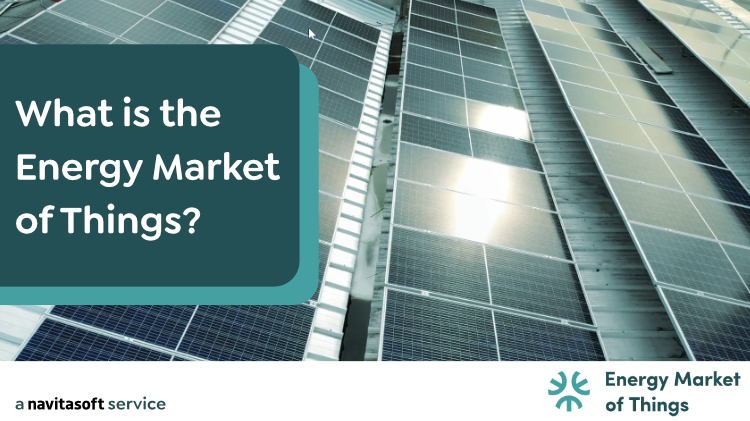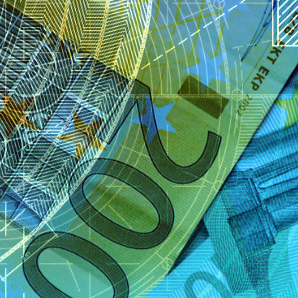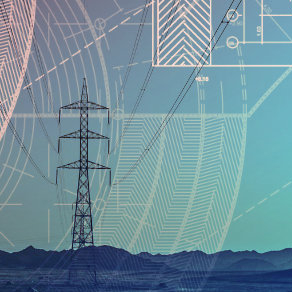
Devices from heat pumps to EV chargers, distributed energy resources (DERs) and power assets now can collect and communicate data, and be connected to any type of power market.
The Energy Market of Things (EMoT) enables the networking of power-related physical devices for small-scale power production, storage and flexible consumption. These “things” are embedded with sensors, software, and other technologies for the purpose of connecting and exchanging data with other devices and any type of power markets - whether those be local flexibility markets, balancing energy platforms, or classical exchanges such as EPEX SPOT, Nord Pool and HUPX. These devices range from ordinary household-level objects to large-scale commercial or industrial site devices.
Find out more on: https://energymarketofthings.eu/
What’s holding back the revolution?
The Clean Energy Package calls for a massive growth in renewable energy as well as an increase in energy efficiency. While big wind parks and the like are clearly called for, a significant part of the solution can come from distributed energy resources (DERs). These are small-scale assets such as photovoltaics, batteries, EV charging, heat pumps, etc. delivering flexibility in the form of energy production, storage, and reduced or delayed consumption.
Unfortunately, network operators are struggling to cope with the growth of DERs. Single rooftop PV installations or EV chargers here and there are no problem, but when the whole street or village has them: problem! This is especially challenging since the network operators don’t have visibility to these behind-the-meter devices. Most grids are not equipped to handle the sudden changes these devices are imposing. If supply and demand are not kept balanced, the grid becomes unstable, resulting in voltage shifting, device damage, brownouts or even blackouts. Some DSOs are coping in ways that are counter to decarbonization goals, for instance by limiting the hours for EV charging on a street-by-street basis.
Meanwhile, individuals and businesses want to implement distributed energy resources in order to cut their long-term energy costs as well as to reduce their carbon footprint. However, even with subsidies such devices have high up-front costs; it takes many years to break even. And the feed-in tariffs that initially allowed them to sell back access power to the network operator are fading away in many countries.
Instead, aggregators such as virtual power plants pool DERs from many asset owners, trading the flexibility of these assets on wholesale energy markets or balancing / control reserve markets. This gives the asset owners an additional revenue stream, but typically through long-term fixed contracts. They are tied to one specific aggregator and don’t directly profit from market volatility (such as we are seeing today). This arrangement is great for the aggregator, but may not be the best for the asset owner.
Local flexibility markets present another way for asset owners to profit from their assets, by trading their flexibility locally. Such markets are still in their infancy, with many different market models currently being discussed or tested. However, the buyer is generally either the DSO or TSO, while the sellers are usually VPPs, aggregators, traders, etc. - not device owners. The individual asset owner generally cannot trade directly by placing offers.
The good news is: As these devices grow, so does their potential. Even very small shifts up or down, earlier or later can add up. Studies have shown that merely 1000 households can deliver the equivalent flexibility of a small power plant.
Boosting the power of end-user devices
Flexibility contracts between asset owners and aggregators are not clearly defined in legislation. With the Energy Market of Things, we try to fill that gap with a more fair arrangement.
The EMoT marketplace connects device owners with trading companies (VPPs, aggregators, traditional traders). Think of it as the Airbnb of DER flexibility. Instead of long-term contracts with a single aggregator, device owners can offer their flexibility in short timeframes, even just a few minutes, in order to get the best price. EMoT takes money from the buyers and pay the device owners, minus a small fee.
EMoT supports any type of device, whether with positive or negative flexibility or both. Device owners simply need an IoT device and an internet connection. The owner delegates control of the device to us. EMoT communicates with the device, directly or via the vendor’s system. The platform gets signals for the device’s current position and send signals to control the device based on owner preferences such as period during the day when the flexibility is available, range of flexibility (i.e. cooling still stays within comfortable range), remuneration expected for the flexibility. Our presence is transparent to the owner; execution of trades and delivery of flexibility is fully automated.
EMoT is not a trading entity; trading and the relationship with exchanges and network operators is the responsibility of the aggregator. The platform is also not an aggregator; it controls the devices but does not provide optimization in terms of deciding which devices to turn on or off, up or down. These decisions are made purely by trades executed on the marketplace.
Our goal with the Energy Market of Things is to tap the unused potential of distributed devices by connecting them with trading entities, in order to get as many megawatts of green flexibility on the market as possible while enabling trading companies, aggregators, device owners and device manufacturers to make the most of market opportunities.
Find out more about getting end-user devices connected to power markets.




